Abstract
The microbiological control efficiency of two class 100 laminar down-flow hoods was determined by using aerosols of Bacillus subtilis var. niger spores. The first unit challenged utilized a slanted eyelid to partially enclose the front work opening. This hood showed nearly perfect control of ambient organisms in the work area. It also gave a 106 or greater drop in the number of organisms passing out of the exhaust system. However, when the interior work area of the hood was challenged, significant numbers of spores penetrated the air barrier and escaped into the ambient air. A redesigned laminar flow hood was built incorporating a vertical eyelid and a reduced opening to the work area. This hood showed the same excellent characteristics for controlling ambient contamination. Exhaust system leakage was also extremely low. Air barrier efficiency for the newer hood was increased with lower amounts of spore penetration into the ambient air.
Full text
PDF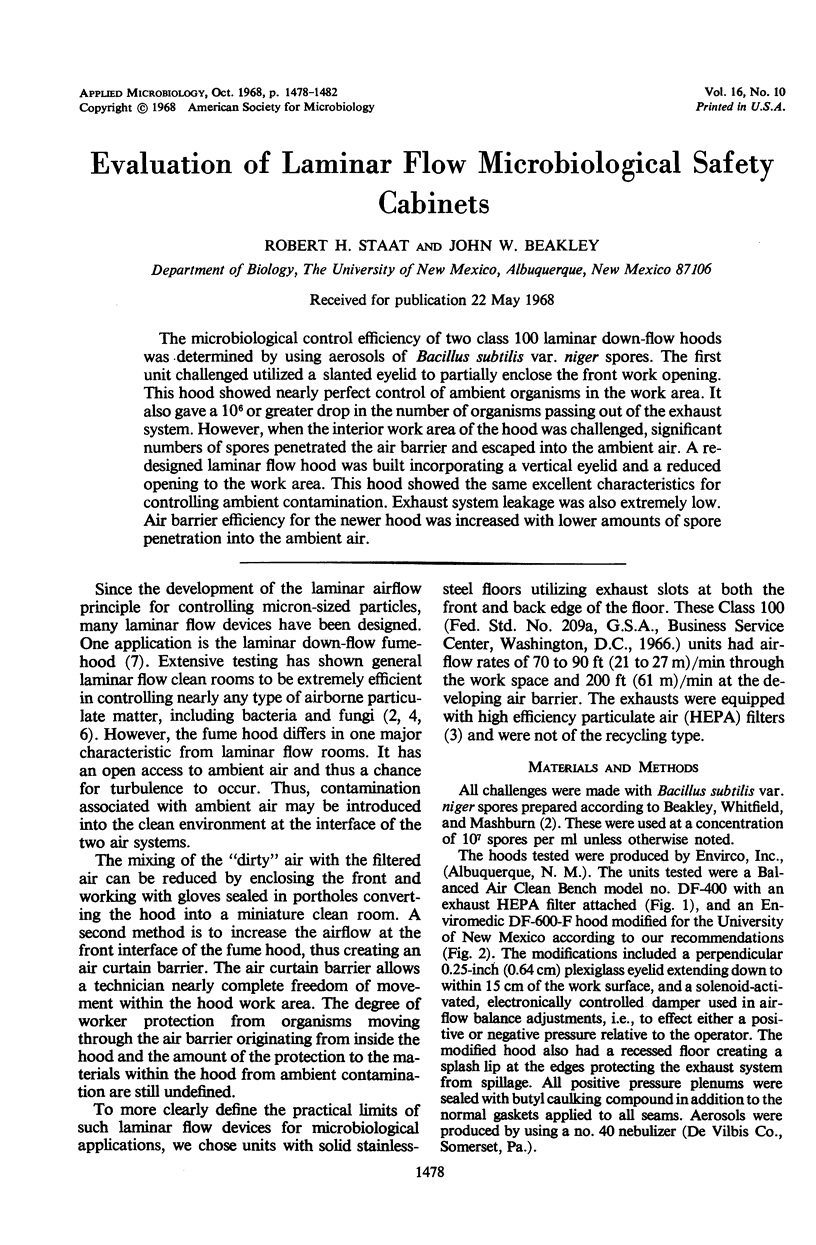
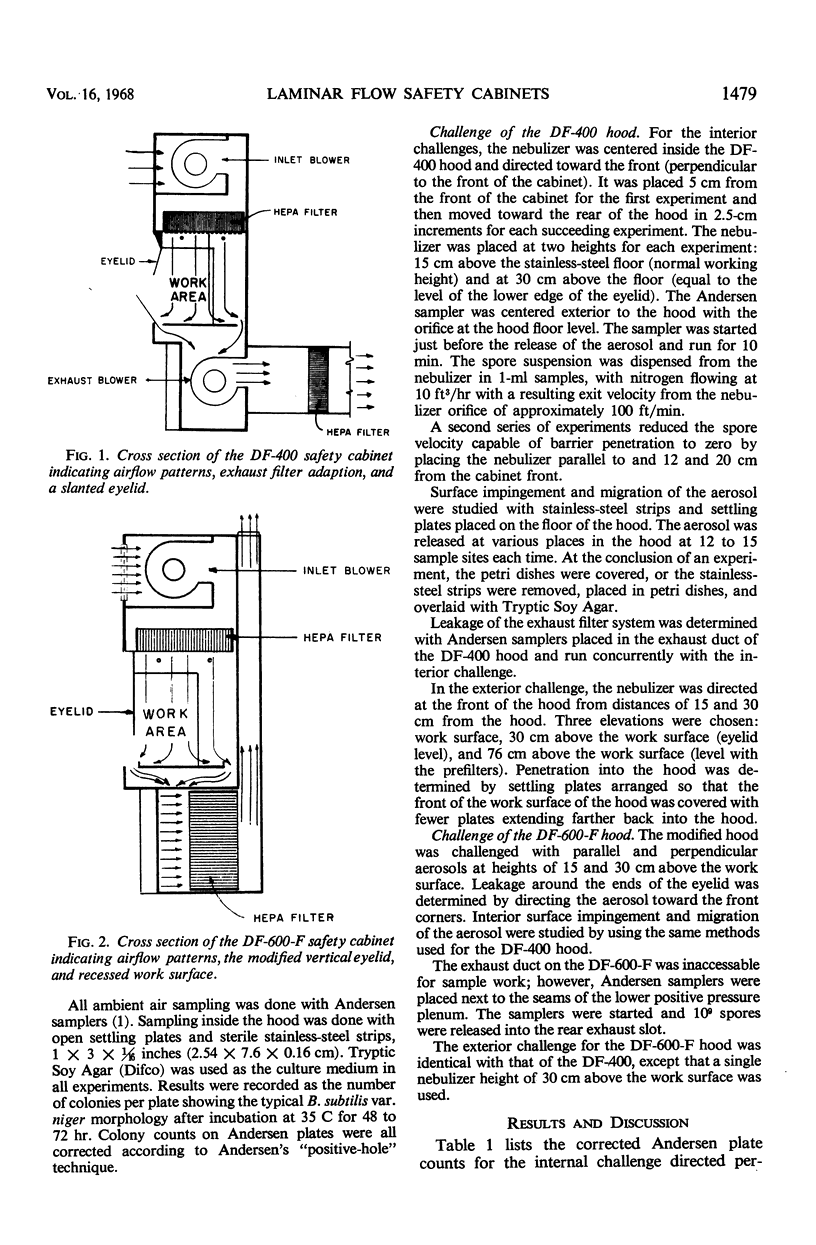
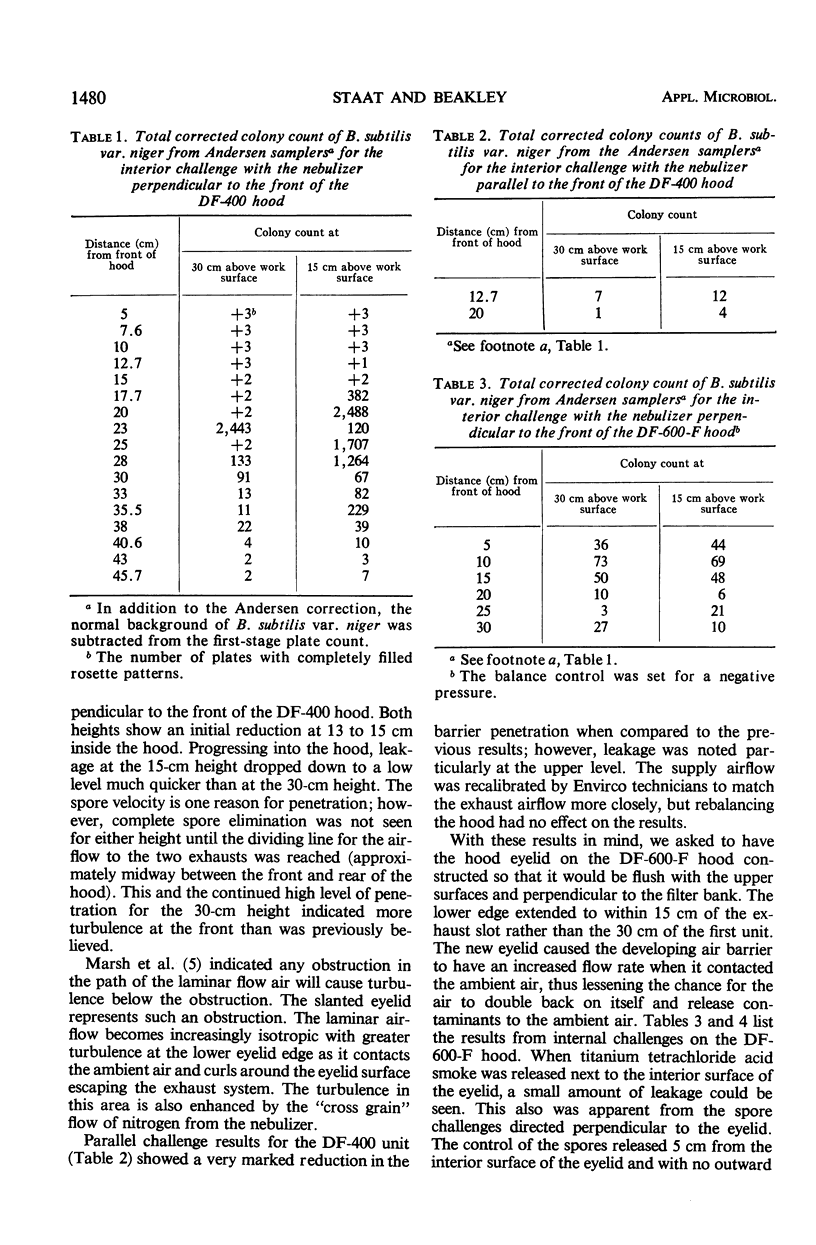
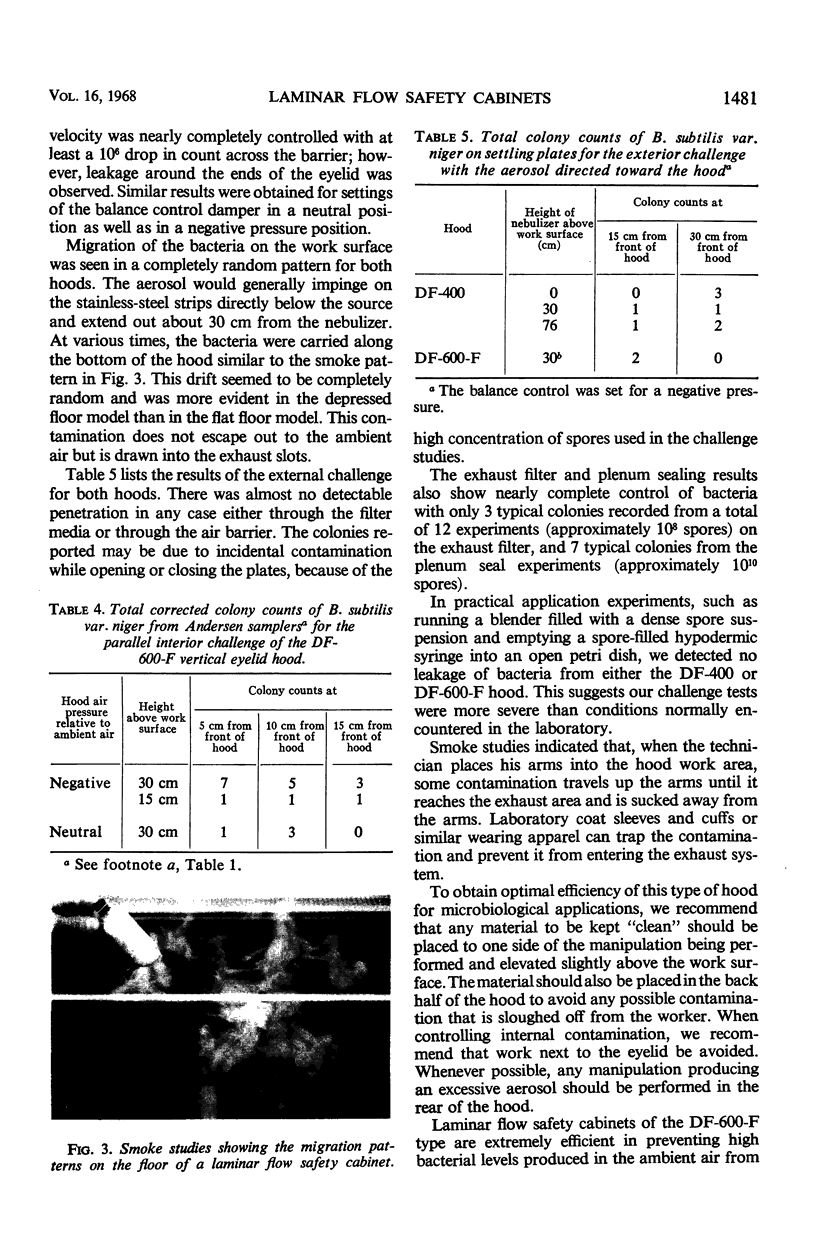
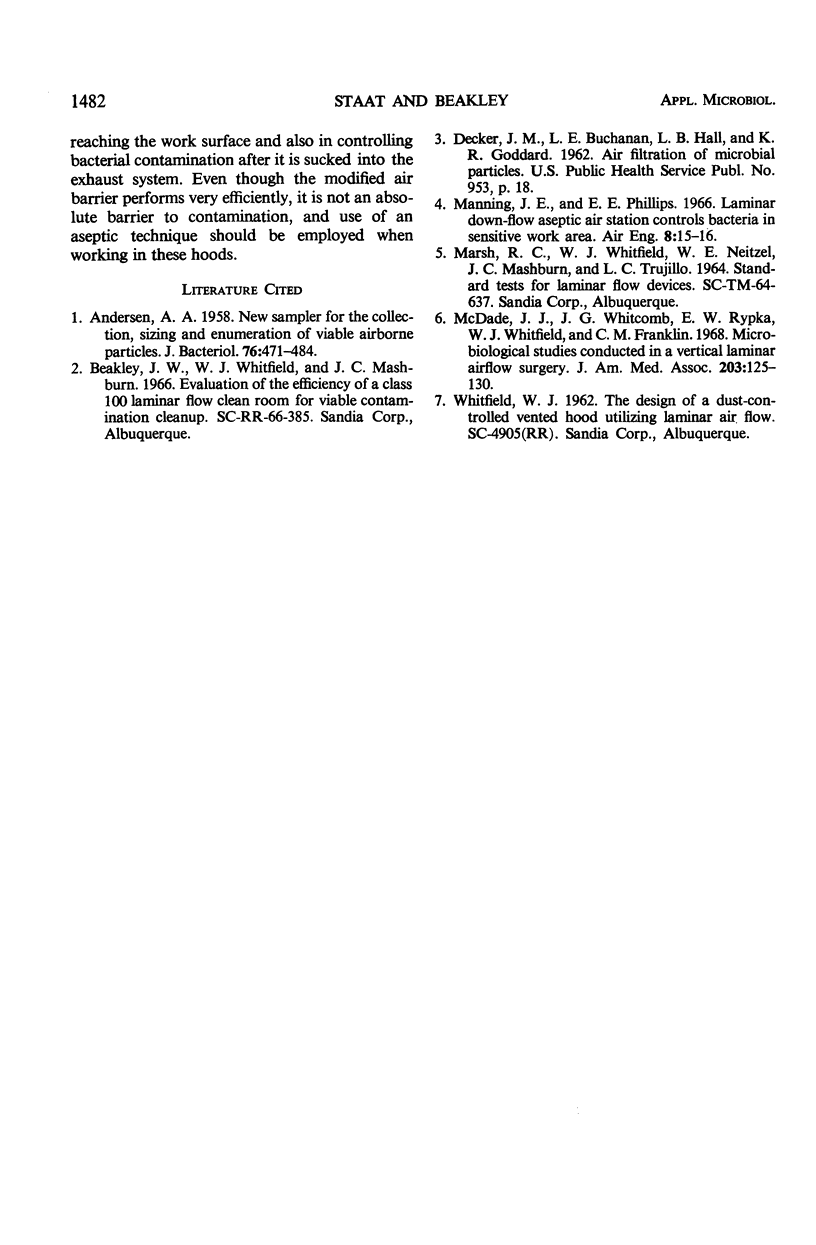
Images in this article
Selected References
These references are in PubMed. This may not be the complete list of references from this article.
- ANDERSEN A. A. New sampler for the collection, sizing, and enumeration of viable airborne particles. J Bacteriol. 1958 Nov;76(5):471–484. doi: 10.1128/jb.76.5.471-484.1958. [DOI] [PMC free article] [PubMed] [Google Scholar]
- McDade J. J., Whitcomb J. G., Rypka E. W., Whitfield W. J., Franklin C. M. Microbiological studies conducted in a vertical laminar airflow surgery. JAMA. 1968 Jan 8;203(2):125–130. [PubMed] [Google Scholar]



